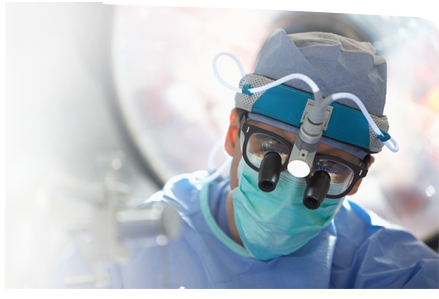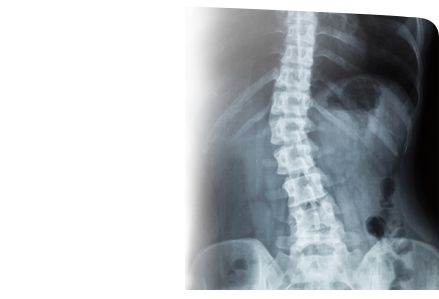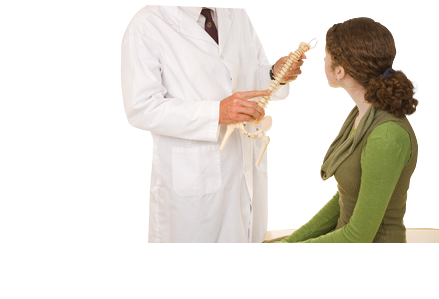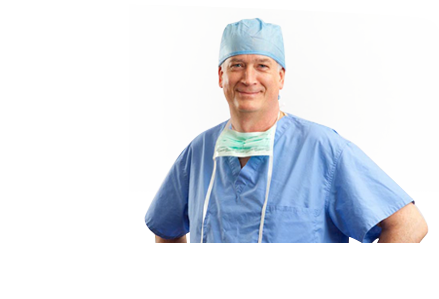Normal Anatomy of the Spine
Back Pain
Back pain is often a common symptom of many disease conditions, which range from simple or dull pain to sudden and sharp pain. If the pain persists for few days, it is an acute pain; whereas if the pain continues for more than 3 months, it is a considered as chronic pain. In most cases, back pain may resolve without any treatment, but incase if persists for more than 3 days, a medical intervention is necessary.
Neck Pain
The first 7 vertebral bones on the spinal column form the cervical spine and are located in the neck region. The neck bears the weight of the head, allows significant amount of movement, and also less protected than other parts of spine. All these factors make the neck more susceptible to injury or other painful disorders. Common neck pain may occur from muscle strain or tension in everyday activities including poor posture, prolonged use of a computer and sleeping in an uncomfortable position.
Spinal Deformity Surgery
The Spine or backbone provides stability to the upper part of our body. It helps to hold the body upright. It consists of several irregularly shaped bones, called vertebrae appearing in a straight line. The spine has two gentle curves, when looked from the side and appears to be straight when viewed from the front. When these curves are exaggerated, pronounced problems can occur such as back pain, breathing difficulties and fatigue and the condition will be considered as deformity. Spine deformity can be defined as abnormality in the shape, curvature, and flexibility of spine.
Find out more about Spinal Deformity Surgery from the following links.
Spine Injections
Spine injection is a nonsurgical treatment modality recommended for treatment of chronic back pain. Injection of certain medicinal agents relieves pain by blocking the nerve signals between specific areas of the body and the brain. The treatment approach involves injections of local anesthetics, steroids, or narcotics into the affected soft tissues, joints, or nerve roots. It may also involve complex nerve blocks and spinal cord stimulation.
Spine Trauma
Spine trauma is damage to the spine due to a sudden traumatic injury caused by an accidental fall or any other physical injury. Spinal injuries may occur while playing, performing normal activities, operating heavy machines, lifting heavy objects, driving automobiles, or when you suffer a fall. Injury to spine may cause various conditions including fractures, dislocation, partial misalignment (subluxation), disc compression (herniated disc), hematoma (accumulation of blood) and partial or complete tears of ligaments.
Vertebral Fractures
Vertebral compression fractures occur when the normal vertebral body of the spine is squeezed or compressed. The bone collapses when too much pressure is placed on the vertebrae, resulting in pain, limited mobility, loss of height, and spinal deformities. In severe compression fractures, the vertebral body is pushed into the spinal canal, which will apply pressure on the spinal cord and nerves.
Degenerative Disc Disease
Degenerative Disc Disease is a condition caused by wear and tear on the discs between the vertebrae causing them to lose their cushioning ability. This is a condition where the intervertebral disc, the gel-like material between the vertebrae, has begun to wear out due to aging, repetitive stress, smoking, genetics, etc. In most circumstances the cause is multi-factorial, and unless there is compression of the nerves or spinal cord, will not improve with surgery. It is a very common condition and may not even cause symptoms in many people.
Herniated Disc
The vertebrae are cushioned by intervertebral discs which act as shock absorbers for the spine. The normal intervertebral disc is composed of a nucleus pulposus, at the center, surrounded by a fibrous ring known as annulus fibrosus. The nucleus pulposus is a soft jelly like substance that is well hydrated and acts like a shock absorber.
Kyphosis
Kyphosis is a condition characterized by abnormal curvature of the spine that causes deformity of the upper back (hunchback). Kyphosis usually affects the thoracic spine, but can also involve the cervical and lumbar segments of the spine. It can occur in children as well as in adults. Kyphosis causes the body to lean forward and interfere with balance and posture and can also cause pain.
Spondylolysis
Spondylolysis is a stress fracture of vertebra that may progress into spondylolisthesis, a condition of displacement of vertebrae from the spinal column. Spondylolysis is the cause for frequent low back pain in children. It is more common among children and teenagers who participate actively in sports such as football, weightlifting and gymnastics.
Spine Tumors
Spine tumor is the abnormal growths of uncontrolled tissues or cells in and around the spinal cord. Tumors can either be cancerous (malignant) or non-cancerous (benign). Some of the commonly occurring benign spinal tumors are osteoma, osteoblastoma, hemangioma, and osteochondroma. Most commonly occurring malignant spinal tumors are chondrosarcoma, Ewing’s sarcoma, lymphoma, osteosarcoma, and multiple myeloma.
Stenosis
Stenosis refers to the narrowing of the transits, in the spine, through which the nerves and the spinal cord travel. Stenosis leads to compression of the nerves and the spinal cord resulting in pain and numbness of the affected region. Depending on the location of stenosis, it can be classified into:
Posterior Spinal Decompression
Spine decompression is a procedure performed to relieve pressure on the spinal nerves anywhere along the spine from the neck (cervical) to the lower back (lumbar). Spinal canal stenosis, disc herniations, fractures, infections and tumors can narrow the spinal canal and compress the nerves. Spinal nerve compression can cause chronic pain, numbness and tingling sensation or weakness in your arms or legs. Posterior spinal decompression surgery is performed from the back of the spine.
Balloon Kyphoplasty
Balloon kyphoplasty is a minimally invasive surgical procedure that relieves the back pain caused by a vertebral compression fracture. It stabilizes the fracture and restores the vertebral body height.
Sacroiliac fusion
Sacroiliac fusion is a surgical procedure which involves fusing of the iliac bones and sacrum for stabilization.
Robotic Spine Surgery
Robotic Assisted Spine Surgery is a minimally invasive spine surgery where the surgeon is assisted by a robotic system (Da Vinci surgical system) to perform the surgery. Robotic systems are becoming increasingly popular in the medical fraternity owing to the unique advantages including the precision, safety and many other advantages.
Scoliosis Treatment
Adult scoliosis is the abnormal curvature of spine giving the spine an “S” or “C” shape in a skeletally mature person. Larger curves cause discomfort while the smaller curves do not cause any problems. In most cases, the exact cause remains unknown.
Cervical Stenosis
Cervical stenosis refers to narrowing of the spinal canal in the neck region. This narrowing exerts pressure over the spinal cord resulting in neck pain. Cervical spinal stenosis occurs due to the narrowing of the spinal canal or the neuroforamen, in the neck region.
Anterior Cervical Corpectomy And Fusion
An anterior cervical corpectomy and fusion is an operative procedure to relieve pressure on the spinal cord and spinal nerves by removing the vertebral bone and intervertebral disc material (decompression) in the cervical spine, or neck.
Anterior Cervical Discectomy with Fusion
Anterior cervical discectomy with fusion is an operative procedure which involves relieving the compression on nerve roots and/or the spinal cord by a herniated disc or bone spurs in the neck.
Posterior Cervical Laminotomy
Posterior Cervical Laminotomy is a surgical procedure employed to relieve the symptoms of spinal cord and spinal nerve compression in the neck. Compression of the spinal nerves and spinal cord may occur due to various spinal conditions such as spinal stenosis, herniated disc, degenerative disc disease, spondylosis, spondylolisthesis, tumor or infection.
Posterior cervical laminectomy and fusion
Posterior cervical laminectomy and fusion is a surgical procedure performed to decompress the spinal cord and nerve roots in the cervical region of the spine. Some of the spinal conditions that may compress the spinal cord and nerve roots include disc degeneration, bulging or herniated disc, spinal stenosis, and spondylosis.
Posterior Cervical Laminoplasty
Posterior Cervical Laminoplasty is a surgical procedure performed to release pressure over the spinal cord and nerve roots in the cervicalspine (neck). A posterior cervical laminoplasty can be beneficial in treating cervical spinal stenosis, cervical herniated disc, cervical radiculopathy, degenerative disc disease, tumor, and infection.
Thoracic Laminectomy
Thoracic laminectomy, also known as an open decompression is a surgical procedure in which the portion of the bone or lamina causing pressure on the nerves is removed.
Lumbar Spine Anatomy
The spine, also called the back bone, plays a vital role in stability, smooth movement and protection of the delicate spinal cord. It is made up of bony segments called vertebra with fibrous tissue called intervertebral discs between them. The vertebra and discs form the spinal column from the head to the pelvis, giving symmetry and support to the body.
Lumbar stenosis
Lumbar stenosis refers to narrowing of the spinal canal in the lower back (lumbar) region which exerts pressure over the spinal cord resulting in low back and leg pain. Lumbar stenosis occurs due to the narrowing of the spinal canal or the neuroforamen, in the lower back region.
Posterior lumbar interbody fusion (PLIF)
A posterior lumbar interbody fusion (PLIF) is a surgical technique that involves correction of the spinal problems at the base of the spine by placing bone graft between two vertebrae.
Anterior lumbar interbody fusion
Anterior lumbar interbody fusion (ALIF) is a surgical procedure to correct the spinal problems from the front of the vertebral body by removing disc or other bone material from in between two adjacent lumbar vertebrae. The surgery can be implemented either as an open surgery or minimally invasive techniques.
Lateral Lumbar Fusion
The back is made up of a number of small bones called vertebrae. Cushioning discs present between the vertebrae act as shock absorbers. The vertebral column allows the cylindrical bundle of nerve fibers called the spinal cord to pass through the entire column length and branch out to the various parts of the body.
X-LIF Extreme Lateral Interbody Fusion
Extreme lateral interbody fusion (XLIF) is a minimally-invasive surgery that involves the fusing of two degenerative spinal vertebrae. The procedure is conducted to relieve painful motion in the back caused by spinal disorders.
Transforaminal Lumbar Interbody Fusion (TLIF)
Transforaminal lumbar interbody fusion (TLIF) is a type of spinal fusion procedure in which bone graft is placed between the affected lumbar vertebrae through a posterior incision on the patient’s back. The term Transforaminal lumbar interbody fusion itself indicates:
Lumbar Laminectomy
Lumbar laminectomy, also known as decompression laminectomy, is a spinal surgery done to relieve excess pressure on the spinal nerve(s) in the lumbar (low back) region.
Minimally Invasive Lumbar Discectomy
A minimally invasive discectomy is a surgical procedure that involves removal of an injured or diseased intervertebral disc to relieve the pressure on the spinal nerve(s) in the lumbar spine or lower back.
Diagnostic Testing Methods
The Spine or backbone provides stability to the upper part of our body. It helps to hold the body upright.
Pain Relief
Pain sensation is a signal sent to the brain from the body that something is wrong inside your body. Back pain occurs if the back is weak, inflexible or if a task is performed in a wrong way.
Physical therapy
Physical therapy is one of the foremost necessary treatment modes of recovery for back pain. A referral to physiotherapy sometimes is created by your spine surgeon.
Exercise
Exercise is the most significant way to improve the health and decrease pain. Appropriate exercises can increase strength, improve flexibility, and reduce back pain.
Bone Spur
Coming Soon
Click on the topics below to find out more from the orthopedic connection website of American Academy of Orthopaedic Surgeons





















